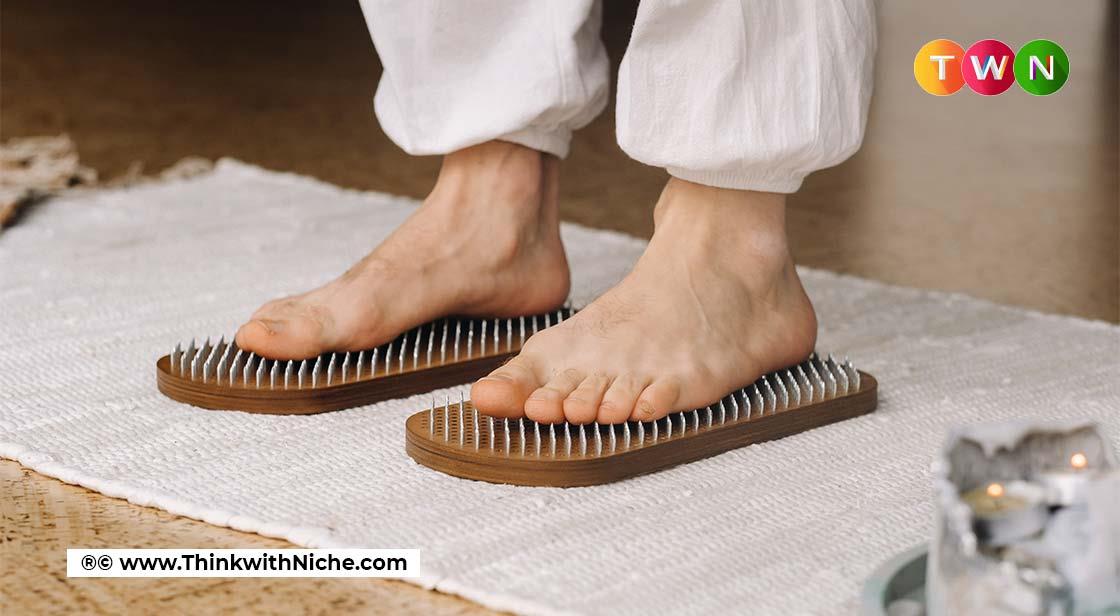Acupuncture Made an Overwhelming Come Back in Medical World

Blog Post
Acupuncture is a type of therapy that includes putting extremely thin needles into a person's skin at varying depths at specified locations on the body. It's been shown in studies to aid with pain relief and is used for a variety of other ailments. Let’s see how acupuncture made a comeback. #ThinkWithNiche
About Acupuncture
Acupuncture is a technique that involves inserting very tiny needles into your skin at certain places on your body. Acupuncture originated in China, both in theory and practice. It was originally referenced and recorded a few hundred years before the Common Era in records.
Acupuncture philosophy holds that energy runs through the human body and that this energy may be channeled to promote health and harmony. Health, according to traditional Chinese medicine, is the outcome of a harmonious balance of the complementary extremes of the life energy known as "Qi," pronounced "Chi." It is claimed that illness is the result of a force imbalance. According to acupuncture philosophy, Qi travels throughout the body via 12 major channels known as meridians. 365 acupuncture sites on the body provide access to these meridians and energy flows. The energy flow is claimed to be rebalanced by inserting needles into these locations in the appropriate combinations.
Development of Acupuncture
Acupuncture was first discovered by the Chinese Emperor Huangdi around 2500 BC, according to history. Acupuncture was most likely developed before Emperor Huangdi, between 5000 and 6000 BC, during the Neolithic Period. Massage, nutrition, herbs, and heat treatment were used to supplement and support it. The Ming dynasty reigned throughout the 14th and 16th centuries. During this period, The Great Compendium of Acupuncture and Moxibustion was produced, including acupuncture principles on which current acupuncture techniques are based. The book goes on to explain 365 places that symbolize holes in the pathways where needles might be placed to alter Qi flow.
Fall of Acupuncture
The popularity of this custom began to wane in the 17th century. It was seen to be illogical and full of superstitions. An order issued by the emperor in 1822 barred acupuncture from the Imperial Medical Institute. The knowledge of this practice was held by rural healers and a few scholars. Acupuncture techniques were further tarnished by the advent of Western medicine in the twentieth century. It, along with other kinds of traditional medicine, was prohibited in China in 1929.
Comeback of Acupuncture
Traditional modalities of medicine, like acupuncture, were reintroduced by the Communist government in 1949. In the 1950s, acupuncture research centers sprung up throughout China, and the treatment became offered in many hospitals. The practice extended to several other nations. In the 6th century, Korea and Japan gained information. In approximately 1680, a European physician working for the East India Company named Ten Rhijne characterized the procedure medically. Both America and Britain acquired an interest in this old medicinal practice throughout the first half of the nineteenth century. When an NIH consensus meeting stated that there was positive evidence for its efficacy, at least in some situations, the United States approved it.
Various Treatments Via Acupuncture
A study conducted in Germany found that acupuncture can aid with tension, anxiety, and stress relief. It has also been shown to help with back pain, neck discomfort, osteoarthritis, joint pain, headaches and migraines, digestion, and a variety of other conditions.
The World Health Organization identified many diseases in 2013 for which acupuncture is helpful. They have claimed that acupuncture can help with high and low blood pressure, chemotherapy-induced nausea and vomiting, some gastric conditions, peptic ulcer, painful periods, dysentery, allergic rhinitis, facial pain, rheumatoid arthritis, sprains, sciatica, dental pain, reducing the risk of stroke, fibromyalgia, neuralgia, post-operative convalescence, substance, tobacco, and alcohol dependence. It may also help cure a variety of diseases, including certain urinary tract infections and epidemic hemorrhagic fever, according to the WHO.
Acupuncture Therapy Process
Acupuncture points are said to be placed on meridians, which are pathways for vital energy in traditional Chinese medicine.
An acupuncturist will evaluate and analyze the patient's condition before inserting one or more thin, sterile needles and providing self-care or complementary therapies such as Chinese herbs. Depending on where the needles are to be placed, the patient will be requested to lie down on their back, front, or one side. Single-use, disposable, sterilized needles should be used by the acupuncturist. The patient may experience a short stinging or tingling sensation when each needle is placed. After the needle is placed, there may be a dull discomfort near the needle's base that diminishes, but it is typically harmless. The needles are expected to stay in place for 15 to 30 minutes.
The number of treatments required varies by person. Over several months, a person with a chronic illness may require one to two treatments every week. After 10 to 12 sessions, an acute condition usually improves.
How To Start Acupuncture Therapy Business
Acupuncture therapy became popular after the revolution because of its low side effects and ability to cure. Simply follow these procedures if you wish to open an acupuncture clinic.
1. Plan Your Business
As an entrepreneur, you must have a well-thought-out strategy. It will assist you in mapping out the details of your company and uncovering some unknowns. You must budget for the expenses. It is a low-cost business to start. For example, you'll need to spend less than $700 on a portable massage table, needles, and other necessary preparatory equipment. Consider a prime location with a low-rent clinic facility. You may open a small acupuncture clinic for around $2,000 if you obtain the necessary licenses and add up the costs.
2. Target Location And Audience
You must arrange your venue with the intended audience in mind. Most of these will be middle- or upper-class customers who are ready and prepared to accept alternative treatment and who can afford to pay out of pocket because most insurance companies do not currently cover acupuncture. Acupuncture therapy is normally neither cheap nor expensive. The initial diagnosis costs somewhere between $100 and $200, with future visits costing anywhere between $75 and $100. As a result, you'll be able to plan your target consumer and profit appropriately.
3. Get Your Authorization And Licence
If your acupuncture clinic is prosecuted, forming a formal business organization such as an LLC or corporation prevents you from being held personally responsible. Before you can start doing company, you must first register for a few state and federal taxes. Understanding your business's financial success requires keeping track of your different costs and sources of money. Maintaining precise and thorough records also makes annual tax filing much easier. Obtain the required permissions and licenses to be more lawful and safer.
Also, before beginning a new project, acupuncture firms may consider requiring clients to sign a services agreement. By defining payment terms and conditions, service level expectations, and intellectual property ownership, this agreement should clarify client expectations and reduce the likelihood of legal conflicts.
4. Health Insurance Eligibility
As an acupuncturist, you'll almost certainly encounter patients who want to use their health insurance to pay for your treatments. If this is the case, it is critical to ensure that acupuncture and oriental medicinal treatment are covered by the patients' health insurance. If your insurance covers it, you'll need to fill out a health insurance claim form to get paid.
5. Promote Your Acupuncture Clinic
Start by creating your website and producing brochures and business cards to distribute across your town to market your clinic. Social media is a vital component of marketing yourself and your business, and it comes at no cost, making it a wonderful choice. Consider more traditional advertisements such as radio, print, and even television commercials if you have the cash.
Who Can Start Acupuncture Clinic?
Acupuncture is a linked discipline to medicine! Therefore, anybody without a basic understanding of the subject cannot work as an acupuncturist. Courses on Chinese medical philosophy, diagnosis, and treatment procedures in acupuncture and related fields are generally included in an acupuncture curriculum. Many educational institutions offer Bachelor's, Master's, and even Doctoral degrees in Chinese medicine or acupuncture. Biomedical disciplines like anatomy and physiology, as well as nutrition, ethics, and practice management, may be addressed in addition. Clinical training and internships are also important parts of the program. You may also get your training from those facilities. Acupuncturists, on the other hand, require specific understanding in this area. You can't do acupuncture until you have this information.
Those considering a career in acupuncture must be passionate about alternative health and holistic treatment. Acupuncturists need a few personal qualities, such as excellent interpersonal, communication, and good listening skills, understanding and sensitivity, high patience, self-awareness, and emotional stability, a logical approach to problem-solving, good eyesight, and a steady hand, to succeed in their profession.
So, if you're qualified, why wait? Start your acupuncture treatment practice today and get ahead of the curve.












